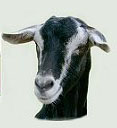|
Getting your first horse or pony
|
Hemlock Conium, also called, “poison hemlock” in English and “Devil’s Porridge” in Irish, is a genus of two species of highly poisonous flowering plants. Some other common names are Musquash Root, Beaver Poison, Herb Bennet, Poison Parsley, Spotted Corobane and Spotted Hemlock. They are in the family Apiaceae, which is native to Europe, the Mediterranean region and southern Africa. This weed is known almost worldwide because it is very toxic to domestic animals and human beings. Hemlock can grow anywhere from 5 to 8 feet tall (1.5-2.5 meters). It has a smooth green stem that is usually spotted or streaked with red or purple on the lower half of the stem. The leaves are a lacy in style and triangular in shape. The root is hollow on the inside, resembling a tube. Small white or green flowers will grow on this plant in clusters or bunches. If the root or leaves of this plant were to be crushed or broken, a strong unpleasant odor would be released. This plant is typically found growing in moist areas, including drainage ditches, marshes, rivers, and lakes or near any body of fresh water. Poisonous to Horses Hemlock is highly toxic to all livestock or farm animals as well as humans. There are many toxic ingredients but the most toxic of them all is one called Coniine. Coniine works in a way that Nicotine does. This toxin disrupts the central nervous system, blocking the neuromuscular junction. Ingestion of this plant can lead to respiratory collapse and death. A horse or pony that eats a small portion of this plant can go under spontaneous recovery and survive if they do not ingest anymore after that. Often animals that have eaten this and become poisoned will return to feed on this plant due to its addictive Nicotine affect. Chronic toxicity can affect an animal but only on who was pregnant because the poison will disrupt the growth of the fetus and can cause malformations. Most of the time if a malformation occurs the animal will soon die. The best way to avoid any death or mutation is to avoid animal contact to Hemlock. If it is in the pasture of your horse or pony either have it removed or fence off that section so the animal cannot reach it.
Poisonous Plants | Horse Health
|
||||
|---|---|---|---|---|---|
The Material contained herein may not be reproduced without the prior written approval of the author. Contents & Graphics Copyright © Horses With Amie (C) 2006-. All Rights Reserved. Our work is not Public Domain. |

